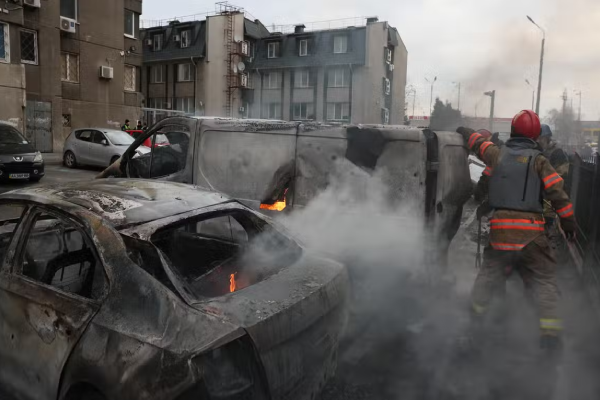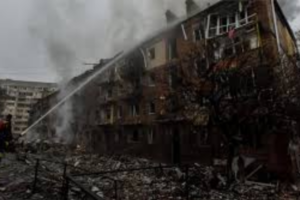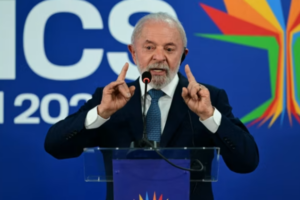Russia launched a barrage of hypersonic missiles across Ukraine while people were sleeping on Thursday, killing at least nine civilians and knocking out power.
The wave of strikes on targets far from the front line was the first since mid-February, breaking the longest period of calm since Moscow launched an air campaign against Ukraine’s civil infrastructure five months ago.
Ukraine said the attacks knocked out power in a number of locations, including the Zaporizhzhia nuclear power plant, Europe’s largest, cutting it off from the grid and forcing it to rely on emergency diesel power to avoid a meltdown. It was later reconnected to Ukraine’s energy grid, according to operator Ukrenergo.
The plant, which Russia has held since capturing it early in the war, is near the front line and both sides have warned in the past of a potential for disaster.
U.N. nuclear watchdog chief Rafael Grossi has appealed for a protection zone around the plant.
Read Also
- Troops clamp down on arms syndicate, arrest suspects, recover AK-47 rifle, others in Taraba
- Russia launches heavy strikes on Kyiv, two persons dead, at least sixteen injured
- Minister Musawa hosts European Union delegation, reinforces commitment to Tinubu’s Renewed Hope Agenda
- Kaduna now safer as El-Rufai’s era of division ends - Shehu Sani
Kyiv, the Black Sea port of Odesa and Kharkiv were all hit. Targets stretched from Zhytomyr, Vynnytsia and Rivne in the west to Dnipro and Poltava in central Ukraine, officials said.
Russia’s defence ministry said it had carried out a “massive retaliatory strike” as payback for a cross-border raid last week.
It claimed to have hit all its intended targets, destroying drone bases, disrupting railways and damaging facilities that make and repair arms.
Moscow says such hits are intended to reduce Ukraine’s ability to fight.
Kyiv says the air strikes have no military purpose and aim to harm and intimidate civilians, a war crime.
In the capital Kyiv, a seven-hour alert through the night was the longest of Russia’s five-month air campaign.





